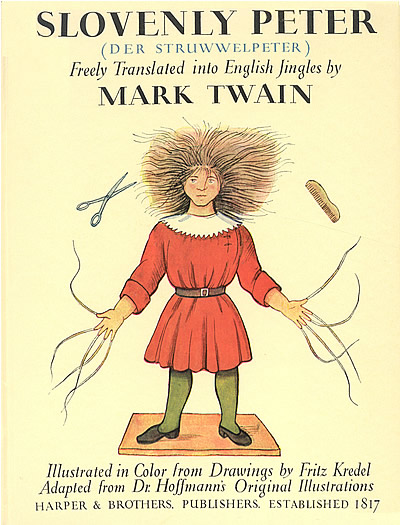Children's literature (also called juvenile literature) consists of the stories (including in books) and poems which are enjoyed by or targeted primarily at children. Modern children's literature is classified in different ways, including by genre or the intended age of the reader.
Genres of children's literature:
(a)Picture books:
A picture book combines visual and verbal narratives in a book format, most often aimed at young children. The images in picture books use a range of media such as oil paints, acrylics(丙烯畫), watercolor, and pencil, among others. Two of the earliest books with something like the format picture books still retain now were Heinrich Hoffmann's Struwwelpeter (Slovenly Peter) from 1845 and Beatrix Potter's The Tale of Peter Rabbit from 1902.


(b)Fairy tale:
A fairy tale is a type of short story that typically features folkloric fantasy characters, such as fairies, goblins,elves, trolls, dwarves, giants, mermaids, or gnomes, and usually magic or enchantments. However, only a small number of the stories refer to fairies. The stories may nonetheless be distinguished from other folk narratives such as legends (which generally involve belief in the veracity of the events described) and explicitly moral tales, including beast fables.


(c)Fable:
A fable is a succinct fictional story, in prose or verse, that features animals, mythical creatures, plants, inanimate objects or forces of nature which are anthropomorphized (given human qualities such as verbal communication), and that illustrates or leads to an interpretation of a moral lesson (a "moral"), which may at the end be added explicitly in a pithy maxim.


(d)Nursery rhymes:
The term nursery rhyme is used for "traditional" poems for young children in Britain and many other countries, but usage only dates from the 19th century and in North America the older ‘Mother Goose Rhymes’ is still often used.


(e)Fantasy/Adventure(genre)
Fantasy is a genre of fiction that commonly uses magic and other supernatural phenomena as a primary element of plot, theme, or setting. Many works within the genre take place in imaginary worlds where magic is common. Fantasy is generally distinguished from the genre of science fiction by the expectation that it steers clear of scientific themes, though there is a great deal of overlap between the two, both of which are subgenres of speculative fiction.


(f)Literary realism:
Literary realism is the trend, beginning with mid nineteenth-century French literature and extending to late-nineteenth- and early-twentieth-century authors, towards depictions of contemporary life and society as it was, or is. In the spirit of general "realism," Realist authors opted for depictions of everyday and banal activities and experiences, instead of a romanticized or similarly stylized presentation.


-----
Initiation: In an extended sense it can also signify a transformation in which the initiate is 'reborn' into a new role.
Quest/Journey: In mythology and literature, a quest, a journey towards a goal, serves as a plot device and (frequently) as a symbol. In literature, the objects of quests require great exertion on the part of the hero, and the overcoming of many obstacles, typically including much travel.
Bildungsroman: In literary criticism, a Bildungsroman (German pronunciation: [ˈbɪldʊŋs.ʁoˌmaːn]; German: "formation novel") or coming-of-age story is a literary genre that focuses on the psychological and moral growth of the protagonist from youth to adulthood (coming of age), and in which character change is thus extremely important.


 留言列表
留言列表
